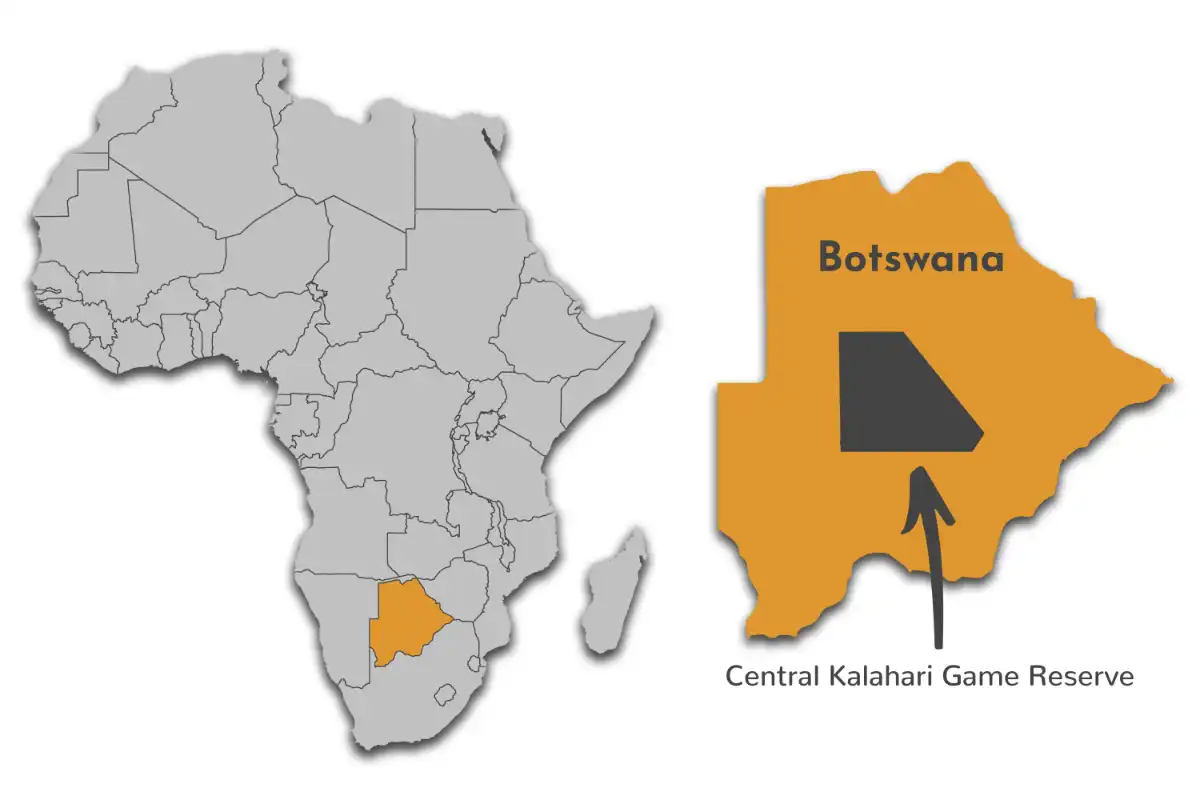Evolve Back Gham Dhao Lodge Central Kalahari
The Evolve Back Gham Dhao Lodge is situated on the northern border of the Central Kalahari Game Reserve in Botswana. Classically African in style with a relaxed, informal ambience, it harks back to...

Starting from
$1200PP
The Central Kalahari Game Reserve lies within the Kalahari Desert in the southwest of the nation and is perhaps the biggest reserve on the planet. The hunter-gatherer San or Bushmen are perhaps the oldest cultures on the planet, straightforwardly descendants from the first individuals in Southern Africa. Although a desert park, there is an immense amount of wildlife here and a walking safari with San guides is a rare experience. The Central Kalahari is comprised of mostly flat and delicately undulating bushveld, with areas of sand dunes and stands of taller trees. The region additionally has Passarge and Deception Valleys with their various fossilized salt pans.
Wildlife24 Animals
High SeasonJuly to October
Best Time to GoDecember to March

Deception Valley, one of the vital attractions of the Central Kalahari Game Reserve and home to a rich water source during the wet season, draws in huge groups of herbivores like Oryx, springbok and blue wildebeest. Little groups of red hartebeest, greater kudu and eland can likewise be seen assembled around the water source. These herbivores are in good company; they are trailed by cheetahs, Leopards and the popular black-maned Kalahari lion.
A small, desert-adjusted well evolved mammals, meerkats are found all through the Kalahari, which covers quite a bit of Botswana. The Central Kalahari is one of the top areas for spotting meerkats in Africa. Sunrise and nightfall are the best occasions to spot hyenas getting back to, or leaving, their caves. Spotted hyenas are normal, yet the more uncommon brown hyena is very simple to find too. The desert is additionally home to numerous more modest predators, for example, bat-eared fox, yellow mongoose and the alluring suricate.
Central Kalahari has very seasonal wildlife viewing. The Best time to visit Central Kalahari is in the Wet season from December to March when animals gather around the Central Kalahari’s fossilized pans, Deception Valley. This is also when many new animals are born. At this time, the roads can be difficult to navigate. April and May at the end of the rains are perhaps a good compromise. They offer good wildlife viewing in better weather conditions.
Central Kalahari has excellent bird watching opportunities, particularly in the wet season with over 250 bird species recorded so far. Military eagle, black-chested snake-eagle, and a few raptors are seen taking the skies of the Central Kalahari. The enormous centralization of small animals offers them a lot of food. Other outstanding bird species incorporate the chat flycatcher, double-banded sandgrouse, Marico Flycatcher, Namaqua dove, sandgrouse, red-billed quelea and yellow-throated sandgrouse.
Central Kalahari is an excellent reserve for bird watching throughout the year. However, the best time is during the wet season from November to April, when migratory birds are available. At this time, a lot of birds are breeding, and some species such as the whydahs transform their plumage from drab to spectacular. The best wildlife viewing months are around the same time.
The best time to visit Central Kalahari Game Reserve is during the wet season from December to March. Wildlife migrates through the park during this season and during these months animals congregate around the pans in the Deception Valley area. However, at this time, roads can get very muddy. In April and May, there are still a lot of animals around, but the roads tend to be in better condition.
Best Time
December to March
High Season
July to October
Low Season
November to June
Best Weather
May to August
Worst Weather
January
